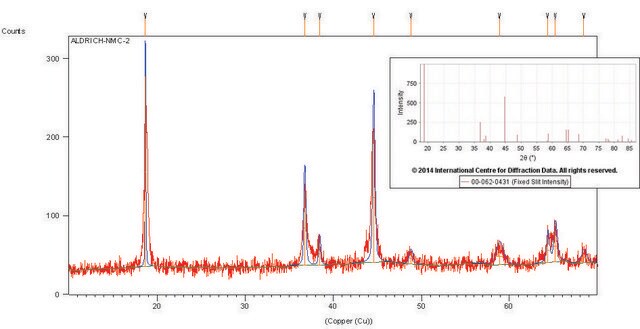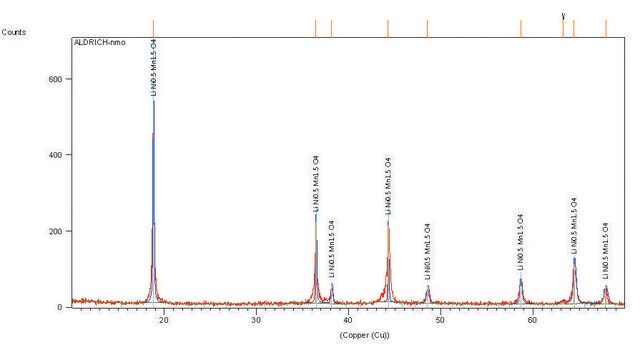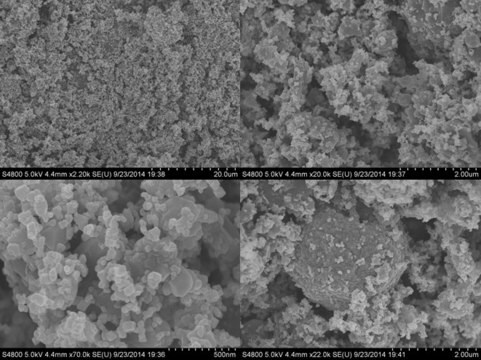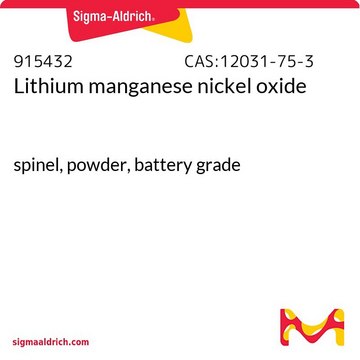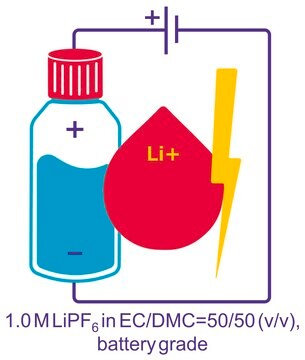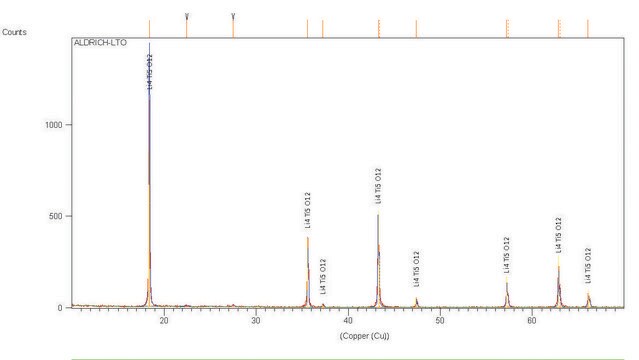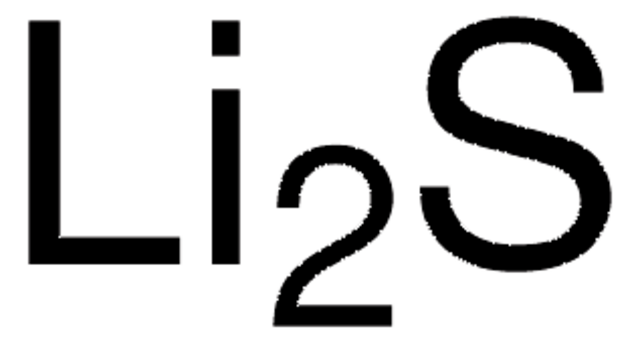765163
Lithium nickel manganese cobalt oxide
electrode sheet, aluminum substrate, size 5 in. × 10 in.
Sinonimo/i:
NMC
About This Item
Prodotti consigliati
Grado
battery grade
Descrizione
Nominal Voltage: 3.5 V, Li/Li+
Composizione
loading, ≥80%
Caratteristiche più verdi
Design for Energy Efficiency
Learn more about the Principles of Green Chemistry.
sustainability
Greener Alternative Product
Grado di funzionalizzazione
≥80% loading
Misura
5 in. × 10 in.
Spessore
16 μm
Dimensione particelle
8-12 μm (typical)
Capacità
150 mAh/g(minimum)
Punto di fusione
>1000 °C
applicazioni
battery manufacturing
Categoria alternativa più verde
Descrizione generale
Applicazioni
Altre note
Operating Conditions:
- Recommended maximum charge voltage: 4.4 V vs Li/Li+
- Recommended maximum charge current: 1C
- Recommended cut-off voltage for discharge: 2.7 V vs Li/Li+
- Recommended maximum discharge current: 1 C
- Recommended charge method: constant current - constant voltage
Avvertenze
Warning
Indicazioni di pericolo
Consigli di prudenza
Classi di pericolo
Carc. 2 - Skin Sens. 1
Codice della classe di stoccaggio
13 - Non Combustible Solids
Classe di pericolosità dell'acqua (WGK)
WGK 3
Punto d’infiammabilità (°F)
Not applicable
Punto d’infiammabilità (°C)
Not applicable
Elenchi normativi
Forniamo informazioni su eventuali restrizioni prevalentemente per i prodotti chimici. Per altre tipologie di prodotto siamo in grado di fornire soltanto informazioni limitate. Nessuna segnalazione significa che nessuno dei componenti è citato in un elenco. È dovere dell’utilizzatore assicurarsi che il prodotto venga impiegato in maniera sicura e a norme di legge.
EU REACH Annex XVII (Restriction List)
Scegli una delle versioni più recenti:
Certificati d'analisi (COA)
Non trovi la versione di tuo interesse?
Se hai bisogno di una versione specifica, puoi cercare il certificato tramite il numero di lotto.
Possiedi già questo prodotto?
I documenti relativi ai prodotti acquistati recentemente sono disponibili nell’Archivio dei documenti.
I clienti hanno visto anche
Articoli
Professor Qiao’s laboratory lays out recent advances in conversion type lithium metal fluoride batteries. This review explores key concepts in developing electrochemically stable microstructures for wide Li-ion insertion channels.
Electrode Materials for Lithium Ion Batteries
Li-ion batteries are currently the focus of numerous research efforts with applications designed to reduce carbon-based emissions and improve energy storage capabilities.
Lithium-ion batteries (LIBs) have been widely adopted as the most promising portable energy source in electronic devices because of their high working voltage, high energy density, and good cyclic performance.
Il team dei nostri ricercatori vanta grande esperienza in tutte le aree della ricerca quali Life Science, scienza dei materiali, sintesi chimica, cromatografia, discipline analitiche, ecc..
Contatta l'Assistenza Tecnica.